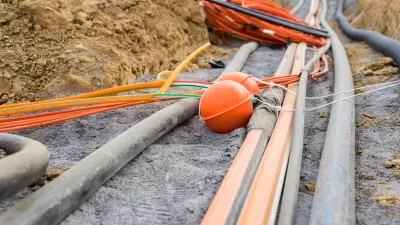Esther Dyson looks at the reasons why cities endure, why they are the right setting for massive social change, and how we can improve them through competition and intelligent design.
Due to the enduring and expanding importance of cities as social and spatial constructs, Dyson sets out to understand their possibilities and problems as businesses.
Dyson sees a key challenge in the fact that, "cities still often operate in a pre-market way. They mostly build their infrastructures themselves, and innovations do not spread easily, owing to a lack of incentives and, for that matter, much of a market other than when one city hires managers from another."
While at the same time, "cities are increasingly behaving like companies, becoming intimately involved in their citizens' quality of life, and, in an increasingly mobile world, competing for 'customers.'"
From this perspective Dyson sees the need for cities to continue to evolve and improve through competition, bringing in the work of Paul Romer, a former Stanford University economist best known for his Charter City initiative. According to Dyson, Romer "has a scheme for building new cities from scratch-and using competition to spread the benefits to old cities over time."
"The goal is not perfection in a single city, but more effective innovation and competition, so that the best cities prosper and other cities emulate them."
FULL STORY: Competition Can Make Cities Better

Alabama: Trump Terminates Settlements for Black Communities Harmed By Raw Sewage
Trump deemed the landmark civil rights agreement “illegal DEI and environmental justice policy.”

Study: Maui’s Plan to Convert Vacation Rentals to Long-Term Housing Could Cause Nearly $1 Billion Economic Loss
The plan would reduce visitor accommodation by 25% resulting in 1,900 jobs lost.

Why Should We Subsidize Public Transportation?
Many public transit agencies face financial stress due to rising costs, declining fare revenue, and declining subsidies. Transit advocates must provide a strong business case for increasing public transit funding.

Paris Bike Boom Leads to Steep Drop in Air Pollution
The French city’s air quality has improved dramatically in the past 20 years, coinciding with a growth in cycling.

Why Housing Costs More to Build in California Than in Texas
Hard costs like labor and materials combined with ‘soft’ costs such as permitting make building in the San Francisco Bay Area almost three times as costly as in Texas cities.

San Diego County Sees a Rise in Urban Coyotes
San Diego County experiences a rise in urban coyotes, as sightings become prevalent throughout its urban neighbourhoods and surrounding areas.
Urban Design for Planners 1: Software Tools
This six-course series explores essential urban design concepts using open source software and equips planners with the tools they need to participate fully in the urban design process.
Planning for Universal Design
Learn the tools for implementing Universal Design in planning regulations.
Smith Gee Studio
Alamo Area Metropolitan Planning Organization
City of Santa Clarita
Institute for Housing and Urban Development Studies (IHS)
City of Grandview
Harvard GSD Executive Education
Toledo-Lucas County Plan Commissions
Salt Lake City
NYU Wagner Graduate School of Public Service




























